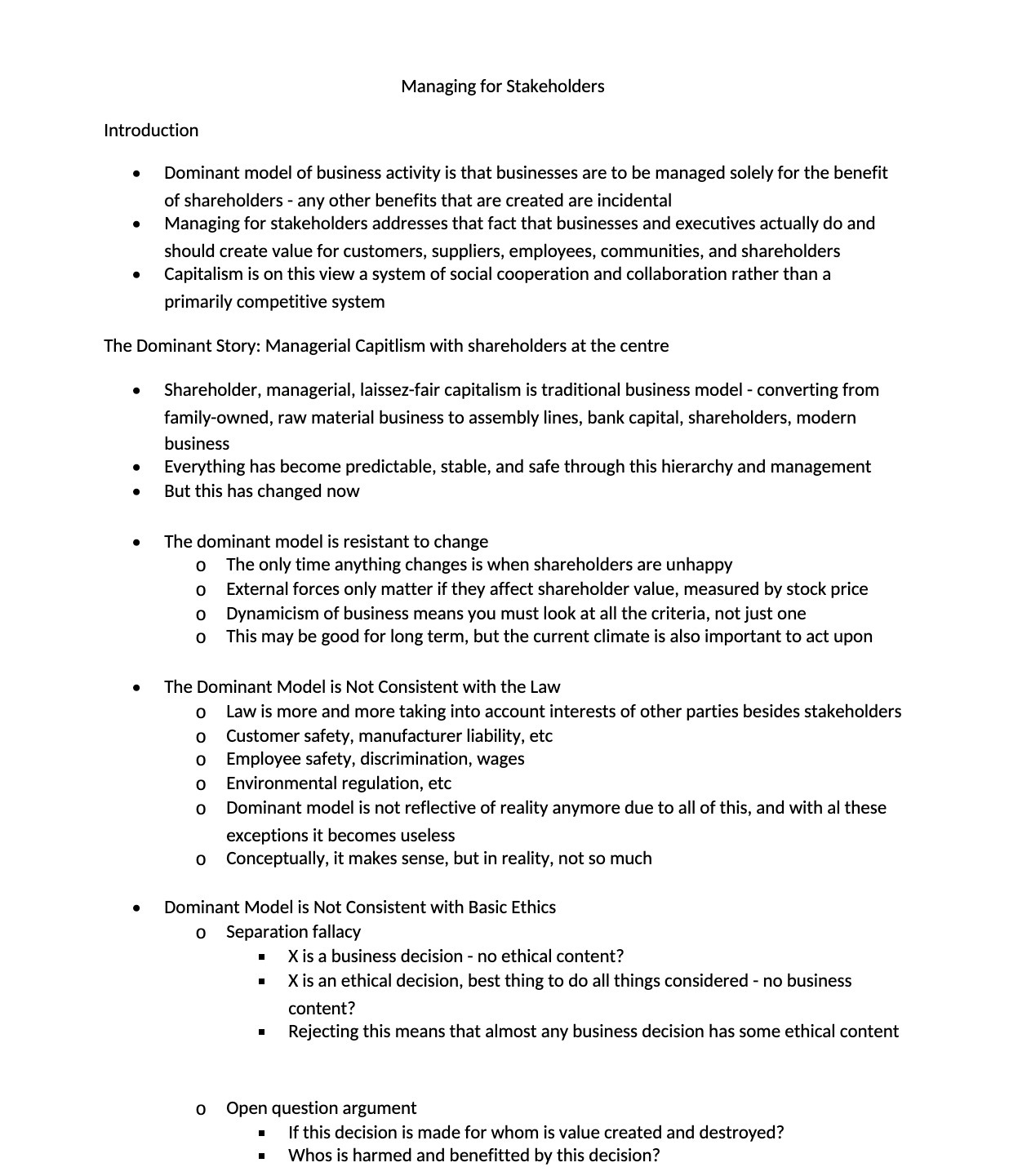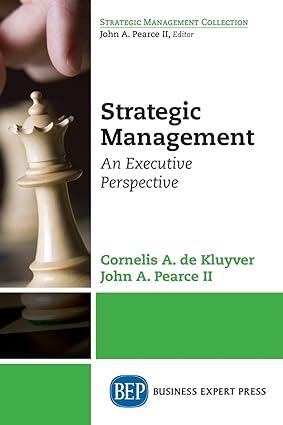Introduction Managing for Stakeholders 0 Dominant model of business activity is that businesses are to be managed solely for the benefit of shareholders - any other benefits that are created are incidental a Managing for stakeholders addresses that fact that businesses and executives actually do and should create value for customers. suppliers, employees, communities, and shareholders o Capitalism is on this view a system of social cooperation and collaboration rather than a primarily competitive system The Dominant Story: Managerial Capitlism with shareholders at the centre 0 Shareholder, managerial, laissez-fair capitalism is traditional business model - converting from family-owned, raw material business to assembly lines, bank capital, shareholders, modern business 0 Everything has become predictable, stable, and safe through this hierarchy and management a But this has changed now a The dominant model is resistant to change 0 The only time anything changes is when shareholders are unhappy 0 0 External forces only matter if they affect shareholder value, measured by stock price Dyna micism of business means you must look at all the criteria, not just one 0 This may be good for long term. but the current climate is also important to act upon 0 The Dominant Model is Not Consistent with the Law 0 0000 0 Law is more and more taking into account interests of other parties besides stakeholders Customer safety, manufacturer liability. etc Employee safety, discrimination, wages Environmental regulation, etc Dominant model is not reflective of reality anymore due to all of this, and with al these exceptions it becomes useless Conceptually, it makes sense, but in reality, not so much 0 Dominant Model is Not Consistent with Basic Ethics 0 0 Separation fallacy I X is a business decision - no ethical content? I X is an ethical decision, best thing to do all things considered - no business content? - Rejecting this means that almost any business decision has some ethical content Open question argument - If this decision is made for whom is value created and destroyed? - Whos is harmed and benefitted by this decision







